Text
I'm bad at naming things. Pls help.
I'm writing a dark science-fantasy romance novel about people with obscure superpowers. The FMC is a chemist/biologist with poison blood that kills anyone who touches it (outside her control) who fears herself and her potential to hurt others, and the love interest is a former contract killer with the ability to break people's bones with a touch (very much within his control), and he is slightly insane and kinda maybe has an insatiable need to hurt people.
So here's the naming issue: Originally, this was two separate stories, the first called Sanguis Ardenti and the sequel, Corda Ardenti (Latin for Burning Blood and Burning Hearts, respectively). They were part of an anthology where all the names were in Latin, but now I'm re-writing the story as one standalone book. The working title is just Ardenti, but I'm not sure that makes sense because
a) without the nouns "Sanguis" or "Corda" the conjugation is... sketchy
b) Ardenti is also a word in Italian, which may be confusing because the book has nothing to do with Italy
c) idk it just sounds weird
So, I've considered a few alternate titles. Please help me out by voting on which you think is the best or COMMENT IF YOU HAVE A BETTER IDEA. SERIOUSLY. SHARE YOUR IDEAS PLS I NEED U
#pls help#help#polls#indecision#writeblr#writer problems#creative writing#writing#writer#fiction#fiction writing#write#writers#writers on tumblr#writer life#writing struggle#writing stuff#writer vibes#writer's problems#writer's life#writer's block#writer's thoughts#writerscommunity#writers and poets#villain#killer#romance#dark romance#fantasy#romantasy
5 notes
·
View notes
Text
not me accidentally reading that as "shitty" instead of "shifty"-
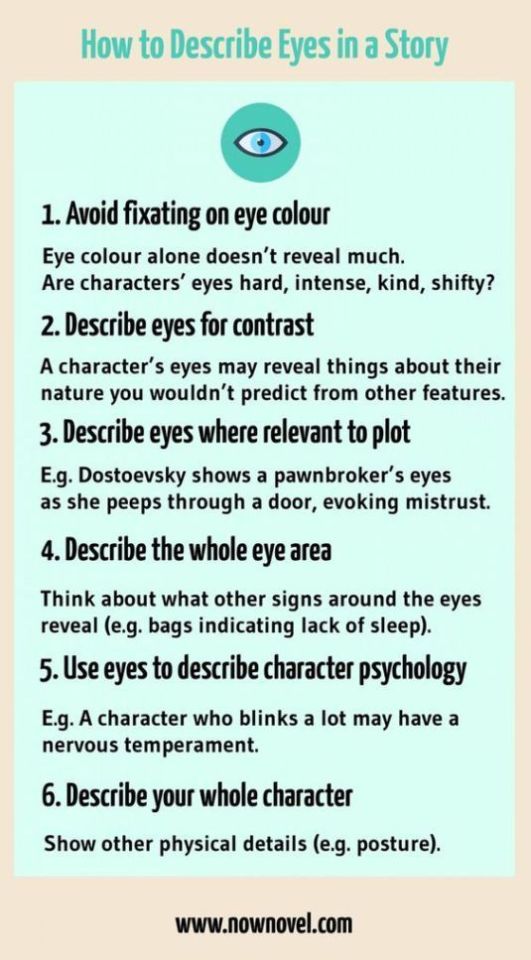
How to Describe Eyes in a Story
596 notes
·
View notes
Text
Storyediting Questions to Ask
As You Read the First Draft:
Are there place that surprised you as you read your first draft?
- Why do you suppose that is?
- Is there material there you'd like to expand?
What are the character really doing in this story?
- Might they have issues you haven't explored fully yet?
Look to the places that drag.
- These might be scenes where you have avoided dealing with something deeper.
- What are the characters really thinking in these places?
- What are their passions, frustrations, and desires?
Imagine alternative plotlines.
- How might your plot be different if ti headed off on another tangent from various points in the story?
- You don't have to follow them, but they might suggest other streams that can flow into the main plot.
Think About Structure:
Does you story play out naturally in three acts?
Is there an immediate disturbance to the Lead's world?
Does the first doorway of no return occur before the one-fifth mark?
Are the stakes being raised sufficiently?
Does the second doorway of no return put the Lead on the path to the climax?
Does the rhythm of the sotyr match your intent? If this is an action novel, does the plot move relentlessly forward? If this is a character-driven novel, do the scenes delve deeply enough?
Are there strongly motivated characters?
Have coincidence been established?
Is something happeing immediately at the beginning? Did you establish a person in a setting with a problem, onfronted with change or threat?
Is the timeline logical?
Is the story too predictable in terms of sequence? Should it be rearranged?
About Your Lead Character:
Is the character memorable? Compelling? Enough to carry a reader all the way through the plot?
A lead character has to jump off the page. Does yours?
Does this character avoid cliches? Is he capable of surprising us?
What's unique about the character?
Is the character's objective strong enough?
How does the character grow over the course of the story?
How does the character demonstrate inner strength?
About Your Opposition:
Is your oppositing character interesting?
Is he fully realized, not just a cardboard cutout?
Is he justified (at least in his own mind) in his actions?
Is he believable?
Is he strong as or stronger than the Lead?
About Your Story's Adhesive Nature:
Is the conflcit between the Lead and opposition crucial for both?
Why can't they just walk away? What holds them together?
About Your Scene:
Are the big scenes big enough? Surprising enough? Can you make them more original, unanticipated, and draw them out for all they are worth?
Is there enough conflict in the scenes?
What is the least memorable scene? Cut it!
What else can be cut in order to move the story relentlessly forward?
Does the climactic scene come too fast (through a writer fatigue)? Can you make it more, write it for all it's worth?
Does we need a new minor subplot to build up a saggin midsection?
About Your Minor Characters:
What is their purpose in the plot?
Are they unique and colorful?
Polishing Questions:
Are you hooking the reader from the beginning?
Are suspenseful scenes drawn out for the ultimate tension?
Can any information be delayed? This creates tension in the reader, always a good thing.
Are there enough surprises?
Are character-reaction scenes deep and interesting?
Read chapter ending for read-on prompts
Are there places you can replace describing how a character feels with actions?
Do I use visual, sensory-laden words?
For a Dialogue Read-Through:
Dialogue is almost always strengthened by cutting words within the lines.
In dialogue, be fair to both sides. Don't give one character all the good lines.
Greate dialogue surprises the reader and creates tension. View it like a game, where the players are trying to outfox each other.
Can you get more conflict into dialogue, even emong allies?
If you like my blog, buy me a coffee☕ and find me on instagram! 📸
1K notes
·
View notes
Text
"angel" gave me a sudden desire to write an enemies-to-lovers romance where some kind of bad guy/criminal/idk is trying to corrupt the detective tracking them down and they fall violently in love.
hold on did I just describe Killing Eve
-:Terms of endearment-:
Requested by: Anonymous (hope you like these :)
By @me-writes-prompts
- Sweets/sweetheart
-Darling
-Beautiful/Gorgeous(can be used for both girls and boys)
-Angel(for the pure and honest ones)
-Love(for the characters who are in love)
-My lover
-My one and only(iykyk who I’m talking about)
-Buttercup/sugar
-Moonlight(this is a personal one I came up with)
-Sunshine
-Beloved(<3)
-Baby/babe
-My heart
-My little treasure
-Mi amor
#imagining Villanelle endearingly/tauntingly calling Eve “angel” now#AHHH#I miss Killing Eve#but fuck the ending#KILLING EVE#villaneve#she's still alive in my headcanon
813 notes
·
View notes
Text
got into an interesting discussion with another writer and now I need your input. is there a particular way of killing characters that you just can't do because it hurts you too much to write? like oddly specific empathy?
#pls tell me I'm not the only one#is my brain weird#pls help#I need to know#writeblr#writer problems#creative writing#writing#writer#fiction#fiction writing#write#writers#writers on tumblr#writer life#spelling#writing struggle#writing stuff#writer vibes#too many tags#writer's problems#writer's life#writer's block#writer's thoughts#writerscommunity#writers and poets#questions#ask tumblr#opinion#discussion
16 notes
·
View notes
Text
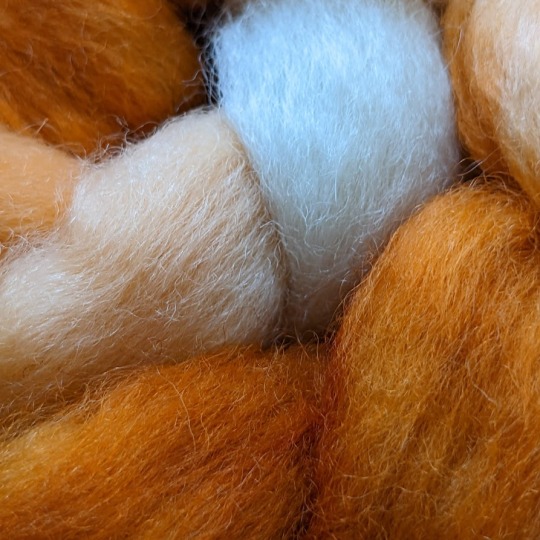
Falkland wool has an exceptionally bright white base, comfortably medium length fibers, and is soft to the touch 🐑 I tend to reach for Falkland as a spinner when I want an extra-squishy yarn, as it has a tendency to make extra-bulky singles, puffing up enthusiastically in the finishing process!
All our colorways are available on Falkland top in our online shop ✨
#I love this story#pls write it#also came here because I saw the pic and immediately thought TRIBBLES#tribbles
2K notes
·
View notes
Text
who would you rather read about?
so here's the thing. I have a lot of ideas for murder-mystery/in-some-way-murdery short stories but I can only focus on one at a time and I have a few similar ideas for female villains/killers with a sort of "not as innocent as she looks" vibe. a "who would ever suspect her?" vibe. an "if you've figured it out, it's already too late for you" vibe. so, I'm appealing to the internet to help me with my indecisiveness.
#pls help#help#polls#indecision#writeblr#writer problems#creative writing#writing#writer#fiction#fiction writing#write#writers#writers on tumblr#writer life#writing struggle#writing stuff#writer vibes#too many tags#writer's problems#writer's life#writer's block#writer's thoughts#writerscommunity#writers and poets#villain#female villains#female rage#killer#female killers
5 notes
·
View notes
Note
thank u because I also overuse look BUT I ALSO ALSO OVERUSE GAZE AND GLANCE
BUT YAY MORE WORDS THAT AREN'T GAZE AND GLANCE OR JUST DESCRIBING EYES TOO MUCH
because I also describe eyes too much
Can you please share some words to use instead of "Look", I really struggle with that, it's always "She looked at him in shock" or "He looked at her with a smile". I know there's "Gazed" and "Glanced" but I wanted some advice to use "Look" less
Words To Use Instead of "Look"
Words Closest in Meaning (w diff connotations!):
stare
eye
study
behold
glimpse
peek
glance
notice
observe
inspect
regarding
view
review
look-see
get an eyeful
peer
give the eye
eyeball
size up
size up
check out
examine
contemplate
scan
recognize
sweep
once-over
judge
watch
glare
consider
spot
scrunitize
gaze
gander
ogle
yawp
Other (more fancy) words:
glimmer
sntach
zero in
take stock of
poke into
mope
glaze
grope
rummage
frisk
probe
rivet
distinguish
witness
explore
gloat
scowl
have a gander
comb
detect
surveillance
squint
keeping watch
rubberneck
pout
bore
slant
ignore
audit
pipe
search
note
speculation
simper
3K notes
·
View notes
Text
Some tips for using a few words to describe voices:
1. Tone Words: Use tone words to convey the emotional quality of a voice. For example, you can describe a voice as "melodic," "soothing," "sharp," "gentle," or "commanding" to give readers a sense of the tone.
2. Pitch and Range: Mention the pitch and range of the voice. Is it "deep," "high-pitched," "raspy," or "full-bodied"? This can provide insight into the character's age, gender, or emotional state.
3. Accent and Diction: Describe the character's accent or diction briefly to give a sense of their background or cultural influences. For instance, "British-accented," "Southern drawl," or "formal."
4. Volume: Mention the volume of the voice, whether it's "whispering," "booming," "murmuring," or "hushed."
5. Quality: Use terms like "velvet," "silken," "gravelly," "honeyed," or "crisp" to convey the texture or quality of the voice.
6. Rate of Speech: Describe how fast or slow the character speaks, using words like "rapid," "slurred," "measured," or "rambling."
7. Mood or Emotion: Indicate the mood or emotion carried by the voice. For example, a "quivering" voice may convey fear or anxiety, while a "warm" voice may express comfort and reassurance.
8. Resonance: Describe the resonance of the voice, such as "echoing," "nasal," "booming," or "tinny."
9. Timbre: Mention the timbre of the voice, using words like "rich," "thin," "clear," or "smoky."
10. Cadence: Highlight the rhythm or cadence of speech with descriptors like "staccato," "lilting," "rhythmic," or "halting."
11. Intonation: Convey the character's intonation by saying their voice is "sarcastic," "apologetic," "confident," or "questioning."
12. Vocal Characteristics: If applicable, mention unique vocal characteristics, like a "lisp," "stutter," "drawl," or "accented 'r'."
21K notes
·
View notes
Photo
Ngl, Dexter kinda made me want to study forensics

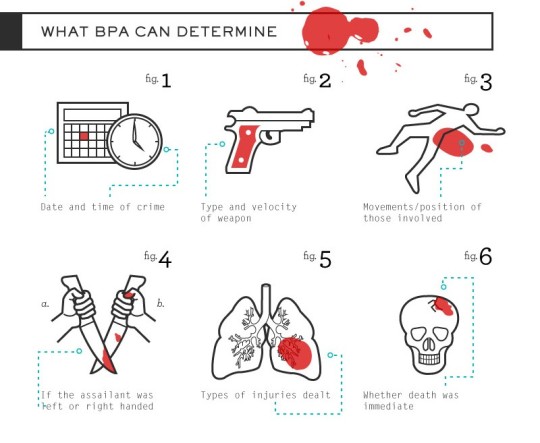





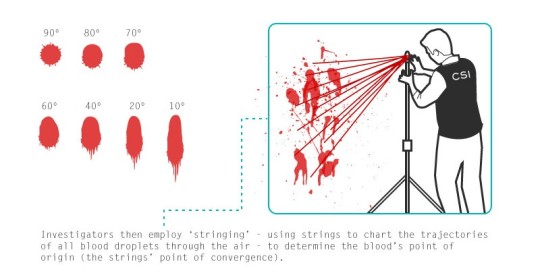

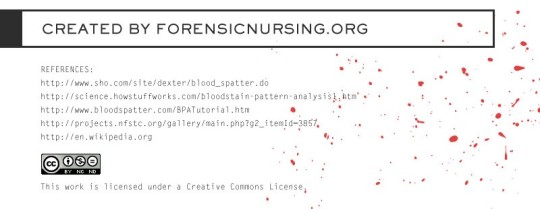
Bloodstain Pattern Analysis (BPA) - Resource for Crime Writers
SOURCE
194K notes
·
View notes
Text
Writer's Tier List
S | the writing you did at 2am when you read it at 2am
----------------------------------------------------------
A | random scene you wrote 4 months ago
----------------------------------------------------------
B | the writing you did at 2am when you read it the next day
----------------------------------------------------------
C | something you wrote when you were uninspired but trying to meet a daily goal
----------------------------------------------------------
D | the scene you forced yourself to write several weeks/months after writing the outline when you were actually inspired, but now you're not and you're just trying to check it off the to-do list
----------------------------------------------------------
F | random scene you wrote 4 years ago
#ascii#tier list#writing tier list#writeblr#creative writing#writing#writer#fiction#fiction writing#writer problems#write#writers#writers on tumblr#writer's block#writer life#writer stuff#writer things#writerscommunity#writer community#writer on tumblr#writing struggles#writers and poets#writer's problems#writer's life#writer's stuff#for writers#writer vibes#female writers#why is there no yellow on tumblr#ascii tier list
26 notes
·
View notes
Text
today I found out I've used an em dash more times in my novel than I've used my main character's first name
#em dash#i regret nothing#you can pry this em dash for my cold dead hands#writer problems#writeblr#creative writing#writing#writer#fiction#fiction writing#write#writers#writers community#writers corner#writers on tumblr#writer life#writing stuff#writing struggle#shitpost#writer vibes#writer's problems#writer's life#writer's thoughts#writers and poets#too many tags#being a writer is#writer's block#character names#character creation#characters
22 notes
·
View notes
Text
*Dalek voice* EXTEEEERMINATE

Vocabulary List for Fight Scenes
Combat Actions
Hoist
Dart/Dash
Deflect
Shield
Sidestep
Snatch up
Stalk
Stamp/stomp
Stretch
Stride
Wagger
Oust
Leap
Lose ground
Mimick
Mirror
Negate
Overpower
Parry
Rear to full height
Resurgate
Suanter
Seize
Take cover
Throttle
Twirl
Unleash
Withdraw
Entwine
Flee
Gain ground
Grasp
Cling to
Breach
Duck
Dodge
Hits
Amputate
Bloody
Carbe
Castrate
Collision
Connect
Crush
Defenestrate
Destroy
Disfigure
Dismember
Dissever
Grind
Maul
Perforate
Rend
Riddle with holes
Saw
Smack
Splatter
Sunder
Torn Asunder
Traumatize
Whack
Writhe
Gut
Hammer
Maim
Mangle
Plow
Puncture
Melee
Assault
Attack
Barrage
Bash
Belebor
Bludgeon
Carve
Chop
Cleave
Clio
Club
Crosscut
Dice
DIg
Gore
Hack
Impale
Jab
Kick
Knock
Onsalught
Pierce
Plnt
Punch
Rive
Shove
Skewer
Slice
Smash
Stab
Strike
Sweep
Swipe
Swing
Transfix
Thrust
Visual Flair
Agony
Asphyxiate
Chock
Cough up bile
Cut to ribbons
Flop limply
Fractue
Freckled with blood
Gouts of blood
Grimane
Hemorrhage
Hiccup blood
Imprint
Indent
Resounding
Retch
Rip
rupture
Shiny with gore
Spew
Splash
Slumped in despair
Splatter
Split
Tear
Topple
Void
Vomit
Wedge
With a fell gaze
With a fiendish grin
With blank surprise
Audible Flair
Bang
Barking
Bong
Boom
Crack
Cackle
Clang
Clash
Crash
Cry
Echo
Elicit a curse
Frunt
Hiss
Howel
Hum
Moan
Muttering
Whoosh
Whistle
Whizz
With a keening cry
Thud
Thunk
Thawk
Splat
Snarl
Swoosh
Squeal
Sing
Sickening Pop
Silintly
Shriek
Shout
Snap
Thundering
Effects
Blind
Burn
Cause frostbite
Cauterize
Concussion
Combust
Daze
Dazzle
Deafen
Disintegrate
Electrocute
Freeze
Fuse flesh
Immobilze
Incinerate
Melt
Pralyse
Petrify
Purbind
Radiate
Reduced to
Shock
Sightless
Stun
Transiluminate
Death Blows
Annihilate
Behead
Decapitate
Disembowel
Eviscerate
Extirpate
Murder
Obliterate
Raze
Exterminate
5K notes
·
View notes
Text
being a (socially anxious) writer is being able to write a 60 000+ word novel but using ChatGPT to write your emails
#being a writer is#writer#writeblr#writer problems#writing#creative writing#fiction#fiction writing#write#writer life#social anxiety#anxiety#anxious writers#writers#writers on tumblr#writers community#writer's block#writer's life#writer's community#writerscorner#writerscommunity#writer's thoughts#writers and poets#writer's problems#shitpost#writer vibes#mental health#mental illness#help I can't social#writing stuff
1 note
·
View note
Text
being a writer is spelling disembowelment correctly on the first try but somehow always screwing up definitliely
#writeblr#writer problems#creative writing#writing#writer#fiction#fiction writing#write#writers#writers on tumblr#writer life#spelling#speling misteaks#that last tag pained me to type#but seriously#we're writers why can't we spell#writing words is literally our whole thing#writing struggle#writing stuff#shitpost#writer vibes#too many tags#writer's problems#writer's life#writer's block#writer's thoughts#writerscommunity#writers and poets
2K notes
·
View notes
Text
The Turing test.
Waverly was mad at the world.
Why? 'Cause she was going to end up alone. It was the only outcome that she could actually see happening.
'Cause she faked every interaction she had outside of her immediate family. She went to classes and ran into people she knew, and waved, 'cause that's what you're supposed to do, and if they started a conversation, she smiled and her voice rose a couple' notes and she answered the pre-recorded, correct answers, provided information when they asked for it, smiled and nodded and pretended to listen when they talked when really she wasn't even there. She fell into the part without even realizing it, just started acting. Acting and dissociating. Sometimes, she played it a little more "real", a little closer to the truth, but really she was just playing a slightly different part, the part of the shy, awkward girl. Because people find shy, awkward girls cute, then leave them alone. She went on Tinder and swiped on people based on looks and a few basic criteria and occasionally remarked on how her mother would think this was shallow. It's OK, depth will come later, right? She waited for them to message her first. She Googled "what to respond to [their message]", or copied and pasted it into ChatGPT. She agreed to meet them for coffee and fell into the part once more. The fake smile. The slightly higher voice. She'd noticed her head tilts slightly to the left when she fakes a laugh. You're so funny. Oh, that's so interesting. It was nice meeting you. We should totally do this again.
They do it again. She fakes it again. She pretends that she likes spending time with him, maybe even convinces herself that she does. It takes about a month, maybe two, before she realizes that she thinks of his name and no feeling comes to mind. She wears his hoodie to the homecoming street party because that's what she's supposed to do. It looks so big on her, isn't that adorable? She holds his hand, they share a drink, she plays the part.
Tell me, what do you feel when I let you kiss me? When I let you touch me? If I gently run my fingertips along your skin and breathe your name while your lips graze my neck, will you believe that I am into this too? Is this what I'm supposed to do?
Sometimes she tried to romanticize it, pretend that she was some kind of badass Femme Fatale and this was all part of her ingenious plan, but she wasn't sexy or seductive, and the best she could get them to believe was that she was normal.
In movies on TV and in books, people have so many feelings. The more Waverly read, the more she came to believe that she had three. She could feel angry, she could feel down, and she could feel energized. She supposed stressed, too, if that counted as an emotion. If she was lucky, she might feel two at the same time. But all those colourful little subtleties, she seemed to be missing. Affection was something she'd heard of, but couldn't remember the last time she'd felt. Grief made sense on paper, but she couldn't give you one personal example. And horror, revulsion, heartbreak, anguish, passion, enchantment, love -- she didn't know if she even had the capacity to understand the concepts. She felt as though she saw the world in greyscale, while everyone around her spoke of a near-infinite spectrum of bright jewel tones and deep, mixed and layered and contrasting hues.
The issue, the more she thought about it, wasn't actually that she couldn't feel emotions. No, that didn't sound right. Upon further consideration, she came to the conclusion that she just couldn't feel them for other people. No one could make her care. She would end up alone because no relationship she built ever had the potential to be real. If she tried very, very hard, she could make you like her, and you would project your humanity onto her and convince yourself that your feelings were returned.
As she sipped her tea in the living room of the apartment she shared with roommates she barely spoke to, she pondered her recent discovery that AI detectors would often flag her writing as AI generated. She tested it once on a section of a report she wrote for school because she was curious. Wasn't that interesting? Apparently, she was indistinguishable from a robot.
She wondered if she would pass the Turing test.
#flash fiction#Waverly#Visions of Waverly Varga#original character#short story#short fiction#character thoughts#spilled thoughts#spilled words#spilled poetry#musings#oc#original content#writing#writer#writers of tumblr#writerscommunity#writers and poets#female writers#creative writing#writeblr#author#writers#writerscorner#character creation#character#characters#original characters#my characters#Waverly Varga 1
3 notes
·
View notes
Text
Some Vital Scenes to Include in a Romantic Subplot, pt. 1
I’ve been in the plotting stages of a novel I’ve been working on for some time now. It’s not a romance novel, per se, but the romantic aspect is very prevalent… dare I say important. Anyway, so as I was working on my scenes and character arcs, I began to realize that I didn’t have enough fleshed-out about romantic arc, nor deepened the protagonist’s love interest or their connection, for that matter. This led me to devise up some scenes that I felt were crucial to the story if I wanted to keep this romantic angle to it, and now that I’ve most of them arranged, I find now that I’m way more excited about my characters’ love story.
These tips will be unnumbered because, obviously, the sequence of these events and how they will fall into your storyline will probably be different. Also, you don’t have to use only one scene for every suggestion that will be mentioned, as you can have multiple scenes of flirtations or deep conversations, for example. They usually blend all together into the narrative at this point. Just remember that there should be some relevance to the plot at hand in some of these scenes as to not derail completely from the main narrative or other conflicts.
I was going to post this all at once, but decided it was too long and wanted to split it into two parts to go more in-depth and for easy reading. /-\ Enjoy ~
- The meet-cute, or the meet-ugly:
Ah, yes, the first encounter. Or, as we sometimes like to call it: the meet-cute, or the meet-ugly if you’re feeling a little unconventional or perhaps mischievous. Though we may enjoy setting up our star-crossed characters in a whole range of moments from awkward to swoon-worthy, the initial meeting is what’s important (if your characters haven't already met before the beginning of the story, ofc, but this is useful to have in mind). Let us quickly define the two:
Meet-Cute: A charming and serendipitous first encounter between the characters in question that sets a positive, memorable, and oftentimes romantic tone.
Meet-Ugly: An unconventional, awkward, or disastrous initial meeting that adds a unique twist to the start of the romantic connection, often leading to unexpected chemistry and an added intrigue on whether or not they’ll get together.
You don’t have to nail your characters’ first encounter into a label or bubble such as these two examples, but I like bringing these up for a general idea.
- Bouts of flirting and/or banter:
Just as the title suggests, these are scenes containing the flirtaious communication between the two characters. These kinds of interactions will, of course, develop over time and deepen the bond or relationship. Playful interactions, gazes, and witty exchanges between the characters can create a lighthearted and flirtatious atmosphere that hints at their growing attraction.
The way they might flirt or tease can reveal their personalities. For example, one character might be more sarcastic, while the other responds with quick wit, or quiet bashfulness. There’s an element of subtlety, as flirting lets the characters express their romantic interest without explicitly stating it (unless one of your characters lacks subtlety in general and prefers to shout their undying love from the rooftops, which would make for an interesting dynamic, but I’m only spit-balling).
Banter, teasing, and romantic tension underscoring heated debates or loathsome gazes suit just as nicely, especially if you’re writing with enemies-to-lovers or rivalry tropes in mind. But be careful! A little goes a long way: too much all at once can repel any growth for the characters or narrative.
- Initial conflict or struggle:
Depending on your story’s big-picture conflict, the introduction of challenges or obstacles can create tension between the characters, adding depth to their relationship and making their eventual connection all the more satisfying. This might include cultural or class differences, opposing goals or values, history of past heartbreak, personality weaknesses such as stubbornness, or external pressures that threaten to keep the characters apart. Even a nosy family or a disapproving mother can be considered. How the characters navigate and resolve these conflicts contributes significantly to the overall emotional impact of the romance subplot, as well as allowing for some exploration of each character's strengths, weaknesses, and resilience.
- Shared vulnerability:
This kind of scene involves the characters opening up to each other about their innermost fears, insecurities, past trauma, or personal struggles. Shared vulnerability goes beyond surface-level interactions. It involves characters revealing their authentic selves, exposing their emotional vulnerabilities, and allowing the other person to see them in an honest — and sometimes new — light.
This is a symbolic gesture of commitment we’re talking about, here… something that requires trust. As characters share their fears or past traumas, they are entrusting the other person with sensitive information, fostering a sense of trust and emotional intimacy. It might be scary, it could be out from left field, but they will end up learning something new about themselves, their situation, or about the other person, and thus deepen their connection, little by little.
679 notes
·
View notes